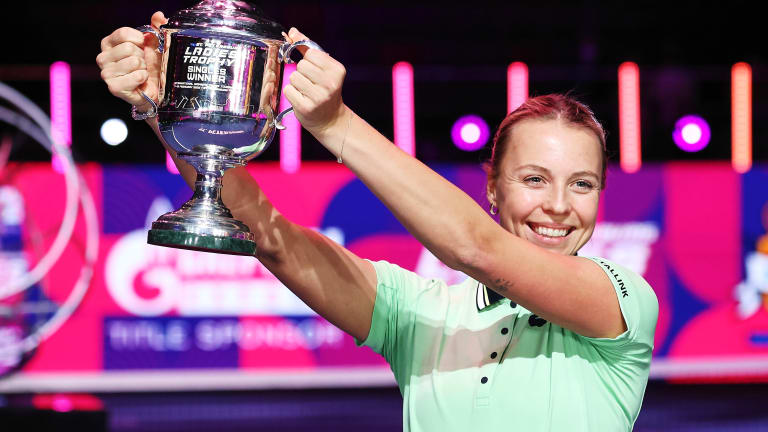ATP Buenos Aires, Argentina
Specialized: What stands between streaking Casper Ruud, Anett Kontaveit and Grand Slam glory?
By Feb 14, 2022ATP Buenos Aires, Argentina
'My real dream is just to play tennis,' Joao Fonseca says after winning his first ATP title in Buenos Aires
By Feb 17, 2025ATP Buenos Aires, Argentina
18-year-old Joao Fonseca captures first ATP title of career in Buenos Aires, makes history
By Feb 16, 2025ATP Buenos Aires, Argentina
Francisco Cerundolo battles past Alexander Zverev in Buenos Aires for biggest win of career
By Feb 15, 2025ATP Buenos Aires, Argentina
Facundo Díaz Acosta rises to occasion in beating Jarry for first ATP title at Buenos Aires
By Feb 18, 2024ATP Buenos Aires, Argentina
Defending champ Carlos Alcaraz upset by Nicolas Jarry in Argentina Open semis
By Feb 18, 2024ATP Buenos Aires, Argentina
Nicolas Jarry surprises Carlos Alcaraz in Buenos Aires semifinals for biggest win of career
By Feb 17, 2024ATP Buenos Aires, Argentina
Top-seeded Carlos Alcaraz reaches Argentina Open semifinals and will play Nicolas Jarry
By Feb 17, 2024ATP Buenos Aires, Argentina
Carlos Alcaraz beats Camilo Carabelli in clay-court debut to reach Buenos Aires quarterfinals
By Feb 15, 2024ATP Buenos Aires, Argentina
Three-time major winner Stan Wawrinka loses to Nicolas Jarry at the Argentina Open
By Feb 15, 2024Specialized: What stands between streaking Casper Ruud, Anett Kontaveit and Grand Slam glory?
Ruud extended his clay-court win streak to 15 in a row after outlasting Diego Schwartzman at the Argentina Open on Sunday.
Published Feb 14, 2022
Advertising
Advertising

Kontaveit has won five of her last six finals dating back to last August—four of which came indoors.
© 2022 Getty Images